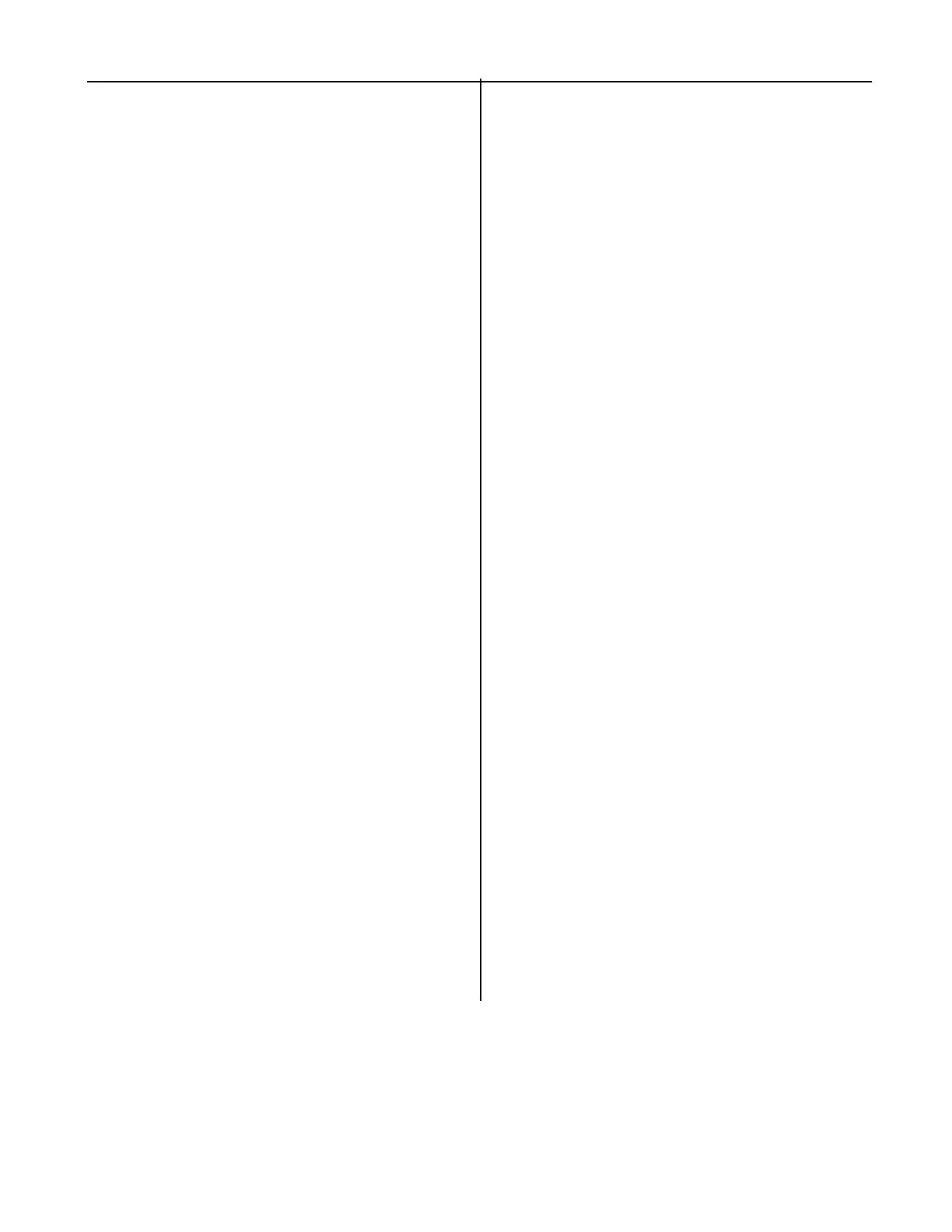38 05/18/2021
193111-121
PROGRAMMING YOUR EC2000 CONTROL
Using Extended AH for Opportunity/
Fast Charging on the ECLIPSE II
PLUS
The Extended AH Feature of the Eclipse II Plus
allows the user to Opportunity/Fast Charge bat-
teries at charge rates from 20-50A/100AH, as
long as the actual charge current is within the
nameplate rating of the charger. Batteries that
are rated below the maximum AH rating of the
charger can be Opportunity/Fast charged at rates
higher than the nominal 25A/100AH.
Using a BID
When a BID is installed on the battery, it must
have the “Battery Start Amps” set to a value
between 20 and 50. The charger will then sup-
ply a start current equal to the Battery Start
Amps setting times the AH rating of the battery
that is programmed in the BID divided by 100.
See the example below:
Battery 24 cell, 600AH (24-100-13)
Charger 1050EC3-24DP
BID Settings:
BID Cells 24 (item 51)
BID AH 0600 (item 53)
BID Battery Type 08 (item 54)
BID Start Amps 40 (item 58)
Resulting Charge Rates:
Start Amps - 6 x 40 = 240 Amps
Finish Amps - 4.5 x 6 = 27A
Charger rated start amp = 261
Not using a BID
The example below describes how to accomplish
Extended amp-hour charging without the use of
BID Module on the battery.
Battery 24 cell, 600AH (24-100-13)
Charger 1050PACH3-24P
Charger settings:
Charger Fixed AH 0600 (Function 36)
Charger Curve Type 08 (Function 38)
Fixed Start Amps 40 (Function 65)
Resulting Charge Rate:
Start Amps — 6 x 40 = 240 Amps
Finish Amps — 4.5 x 6 = 27 Amps
Charger rated start amp = 261
Using “No Gassing” to prevent
excess gassing in Opportunity and
Fast Charge applications on the
ECLIPSE II PLUS
The No Gassing Feature of the Eclipse II Plus
allows the user to Opportunity/Fast Charge bat-
teries until the battery reaches the gassing por-
tion of the charge curve. At this point the charger
stops delivering charge until the “No Gassing”
interval has elapsed.
Using No Gassing
3 Shift Application
When Opportunity/Fast charging batteries in a 3
shift application and when it is desired to not
charge the battery above 80% on the work days
while finish and equalize charging on the week-
ends, the No Gassing interval should be set at
or above the value of the longest break, meal or
shift change period where the charger is con-
nected to the battery. Typically a setting of 2 hrs
would be adequate for this type of application.
2 Shift Application
When Opportunity/Fast charging batteries in a 2
shift application and when it is desired to not
charge the battery above 80% on the work days
while finish and equalize charging on the week-
ends, the No Gassing interval should be set at
or above the value of the longest period where
the charger is connected to the battery. Typical-
ly this is the length of the “off shift” and a setting
of 6-8 hrs would be adequate for this type of
application
1 to 1.5 Shift Application
When Opportunity/Fast charging batteries in a 1
to 1.5 shift application, time is available to
charge the battery fully (100%) each day and
maintain safe battery temperature levels. In this
type of application the No Gassing interval
should be set at or above the value of the long-
est break, meal or shift change period other
than the “off shift” where the charger is connect-
ed to the battery. Typically a setting of 2 to 6 hrs
could be adequate for this type of application.
